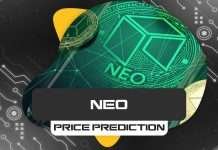
You have probably heard quite a lot about the blockchain – it is everywhere. Revolutionising the way we do everything from executing financial transactions to managing records and contracts, we have only just begun to scrape the surface of its potential.
But who owns the Blockchain?
All the things we use are “owned” or managed by somebody- our money is kept in a bank, our internet is provided by a service provider, our payments are facilitated by a third party, and everything requires signing up, logging in, or being approved.
But not with the blockchain.
Getting our heads around the fact that the blockchain is not owned or controlled by any one entity is a bit tough and a little out of our comfort zone, but in this article, we hope to explain in a little more detail, just how it works.
History of the Blockchain
When the whitepaper Bitcoin: A Peer to Peer Electronic Cash System was released in 2008 and was described as a purely peer-to-peer version of electronic cash, I don’t think anyone was quite prepared for the effect it would have.
Created by the anonymous Satoshi Nakamoto, Bitcoin and Blockchain, the network it ran on, has since developed into one of the biggest and most ground-breaking technologies that the world has ever known.
This technology has the power to impact and influence every industry from finance to manufacturing to education. This is how we got there.
Shortly after the white paper was released, Bitcoin was offered to the open-source community at the beginning of 2009 and it managed to solve lots of problems around digital trust through its features of being able to record important information publicly without the risk of it being tampered with.
It is completely transparent, time-stamped, decentralised, and immune to fraud.
Today, many think that Blockchain and Bitcoin are one and the same thing, but they are not. By 2014, some had started to realise that the Blockchain could be used for many different kinds of operations.
As a decentralised, open, ledger that can record transactions between two entities in a permanent way without the need for third-party authentication, it created an extremely efficient process that could dramatically reduce the cost of a range of different transactions.
Once the power of its potential was discovered, there was a huge increase in investment and discovery to see how it could streamline processes in supply chains, insurance, healthcare, transportation and logistics, voting, and even contract management.
In 2018, over 18% of financial institutions are already using blockchain technology in their processes- a number which is set to grow exponentially.
How Does the Blockchain Work?
When executing any kind of transaction, to ensure that it is fulfilled properly we need to either nominate a third party, draw up a contract, or trust the other party that is involved.
None of these options is fool-proof as we cannot trust strangers, drawing up a contract takes time and money, and using a nominated third party can also be costly and time-consuming.
This is where the Blockchain comes in.
The blockchain is the perfect solution because it allows us to use a fourth option which is secure, quick, and cost-efficient. You can write a few lines of code that will require certain conditions to be met before the payment is released to the other party.
It functions sort of like an electronic contract, but it is executed solely on the blockchain without the need for guidance, actions, or interference by anyone else.
It functions like a structure of digital data that each represents a financial ledger entry or the record of an individual transaction. Each transaction is digitally stamped and signed to ensure that it is authentic and that no one tampers with it in any way.
The ledger itself and the transactions on it are of a high integrity.
The really exciting bit comes from the fact that these digital ledger entries are distributed among the Blockchain infrastructure – this means that these additional nodes or layers in the infrastructure provide a consensus system that provides information on the state of a transaction at any second and replicates all of the authenticated ledgers that are then distributed amongst them.
When a new transaction is executed, a majority of the nodes in the blockchain implementation are required to execute an algorithm that evaluates and verifies the history of the individual blockchain block that is being proposed.
If the majority of the nodes come to an agreement that the signature and history are valid, a new block of transactions is accepted into the ledger and a new block is added to the chain of transactions.
If the majority does not come to a consensus that the new transaction should be added, then it is denied and not added to the chain. It is this model that allows the Blockchain to run as a distributed ledger without the need for a central, unifying authority that would decide what is valid and what is not.
So Who Owns It?
The answer is that no one really owns Blockchain technology, although specific and individual Blockchains can be owned by different organisations.
It is worth noting that there is a big difference between Blockchain technology and the Blockchain.
The technology is the concept and the idea behind the operation of a Blockchain and it can be replicated and used by whomsoever wants to use it, in other words, it is the protocol or the principle governing its operation and execution.
Whilst Blockchain technology is typically associated with Satoshi Nakamoto, the technology itself and the ideas behind it are actually much older than the development of the Blockchain in 2008.
Back in 1991, Stuart Haber and W.Scott Stornetta described some work they had been doing on a cryptographically secured chain of blocks that allowed several documents to be collected into a block.
But it doesn’t really matter who came up with the original idea for Blockchain technology because it is just a protocol and protocols are used in communications in the same way that programming languages are used in a computation.
You cannot claim ownership over C++ or JavaScript, and as such, you cannot claim ownership over Blockchain technology.
Whilst most are in agreement that you cannot claim ownership over a particular programming language, people can claim ownership over an application that is developed using that particular language.
Similarly, you can own a Blockchain application but you cannot technically own the technology itself. Many organisations are developing their own private blockchains, therefore becoming owners of it – but the concept of owning a blockchain is very different to owning blockchain technology.
Public blockchain such as Ether allows users to create and then run an application from anywhere and Blockchain 2.0 functions as a sophisticated programming language that allows users to create smart contracts, therefore creating invoices that pay themselves or share certificates that will automatically send their owners dividends when profits reach a certain level.
The Blockchain 2.0 has given users some great new possibilities for its uses.
When Nakamoto first released the Bitcoin whitepaper it seemed like the technology would only be used for digital currencies, although since 2.0 has been released, there are new use cases coming to light every day.
Supply chain management, crowdfunding, auditing, and the Internet of Things are just a few of its many applications and basically, Blockchain 2.0 goes above and beyond transactions to offer users the ability to exchange value without the need for a third-party intermediary.
Blockchain has been compared by many to the internet.
Similar to Blockchain technology, the internet was created bit by bit through the collaboration of many individuals and entities, all making valuable and important contributions.
The last milestone that helped catapult the internet into the entity we know today was the introduction of www by Tim Berners-Lee.
This didn’t make him the owner of the internet and this same idea can be applied to Nakamoto. Today, numerous applications and programmes are developed and run on the internet and their owners do not own the internet, but rather just the applicable programme or application.
The Blockchain has many similarities to the early days of the internet. Just as in the 90s, every smart and technologically minded person was thinking of building certain things on the internet, now many people are thinking of what they can build on the Blockchain.
Everything from email, friends, commerce, and entertainment have found their way onto the internet and in the same way, we will expect to see similar uses for Blockchain technology.
Whilst noone owns Blockchain technology per se, it could be considered that whoever has the most customers, technically owns the blockchain. Much in the same way that some of the internet giants can define themselves as being the internet, this could be applied to Blockchain in the future.
What Does The Future Hold?
Thanks to Blockchain, the concept of decentralised ownership is becoming a reality. Instead of needing a third party to validate the ownership of an asset, you will be able to do it yourself.
Looking beyond the blockchain there are ideas such as decentralised IP leasing and the Interplanetary File System (IPFS) which are set to drastically change that way that we do things. The IPFS is a framework which aims to totally replace the centralised architecture of the HTTP internet protocol with a much more decentralised and distributed approach.
The IPFS is a distributed network of nodes which can query each other for information and then decide which bits of information they will store. This IPFS will be implemented so that it can tie a single file to a single has which makes it possible for the network to reference large amounts of data on the Blockchain in a quick and cost-effective manner.
With more and more smart contract Blockchains popping up all over the place, more and more companies are racing to understand how they can apply it to their businesses.
There is no doubt that it is one of the hottest and most revolutionary technologies to hit the business world.
Whilst some companies are dismissing it as a buzzword and a passing trend, the savviest amongst them are realising just how much potential it has.
There is no doubt that we are still in the early stages of adoption and experimentation and whilst there is a lot of enthusiasm about the technology, its actual use cases are still limited. Once this experimentation phase is complete, we are expecting to see a few top applications emerge that will take the technology truly mainstream.
As a consumer, we may never be fully aware of the technology in future use cases, and we may end up using it for a variety of different purposes but not actually realise or be aware that we are using it. We will just now that we are able to send money to a friend who lives on the other side of the world, quickly and without fees.
Blockchain will operate in the background and we will use it but without realising we are using it. Many of the mainstream applications of the Blockchain that we will expect to see over the next few years are expected to be invisible to SMEs, and the consumer or end user will just enjoy the benefits of it.
When it comes to ownership, it is pretty certain that we won’t see Blockchain being owned by anyone as such, but we will see an increase in the number of companies that set up their own private blockchains.
This means that we may be using a blockchain that is owned by an individual or a company, but the technology itself, like the internet, will remain completely free.
For more detailed information on blockchain and its technicalities, visit our guide to What Is Blockchain Technology.



![Bitcoin Buyer Review of Official Website [2022] bitcoin buyer review featured image](https://bitemycoin.com/wp-content/uploads/2022/04/bitcoin-buyer-review-featured-218x150.jpg)
![Bitcoin Digital | Official Website Review [2022] bitcoin digital review featured](https://bitemycoin.com/wp-content/uploads/2022/04/bitcoin-digital-featured-218x150.jpg)



